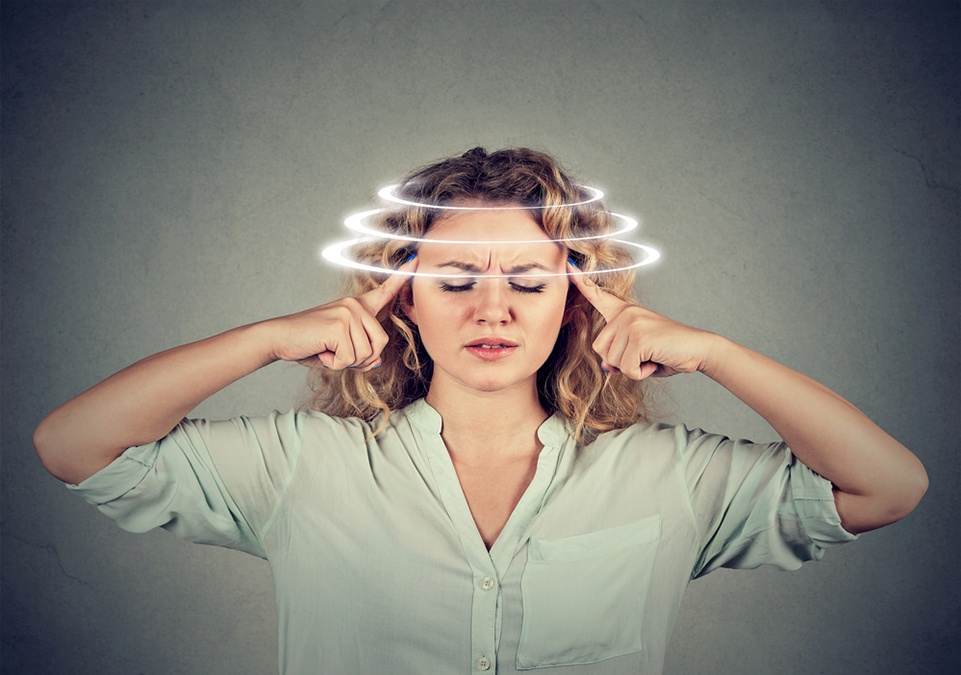 For a medical problem that is as common as vertigo, clinicians are still remarkably uninformed about how to diagnose and treat it.
For a medical problem that is as common as vertigo, clinicians are still remarkably uninformed about how to diagnose and treat it.
It is still very common for doctors to prescribe a range of drugs that often makes the vertigo worse. These include diuretics/water tablets, antihistamines and anti-cholergenics, all of which cause dizziness and drowsiness, along with anti-anxiety drugs like Valium and Xanax, which have a similar.
But a new study in a Russian journal called Zhurnal nevrologii i psikhiatrii imeni SS Korsakova has shown that non-drug treatments are safer and more effective than drug treatments for combatting vertigo.
599 subjects were all diagnosed with vertigo after first being misdiagnosed as suffering from a variety of conditions which included: clogged arteries at the back of the brain that provided the brain with blood (vertebrobasilar insufficiency), brain damage because of high blood pressure or clogged arteries (encephalopathy), cervical spondyloarthrosis (a condition that damages the joints and vertebrae in the neck), or damage to the autonomic nervous system (autonomic dystonia).
Once they were all properly assessed, 39% of the group was diagnosed with Benign paroxysmal positional vertigo (BPPV), 29% with phobic postural vertigo (PPV), 14% with Ménière’s disease, 11% with vestibular neuritis (infection of the inner ear nerves), and 5% with multisensory dizziness in the elderly.
BPPV is the most common and the easiest to treat, with a success rate of 90.2% with the first treatment, and 100% with the second treatments.
The treatment for BPPV is a relatively simple series of head movements that clear these semicircular canals in your inner ear of the calcium crystals that have accidentally become trapped in them.
The other conditions that cause vertigo had to be treated via rehabilitation programs specifically designed for each patient.
These included:
1. Balance retraining, whereby your vertigo is deliberately triggered to teach your brain to interpret the scrambled signals as harmless.
2. Vision stability training, a process similar to balance retraining but concentrated on the visual interpretations of your surroundings.
3. Posture training, whereby you learn to eliminate unnecessary head movements that trigger your attacks.
4. General fitness and strength training to prevent your body from collapsing when attacks occur.
These programs were successful in alleviating the symptoms in all the study subjects with the other conditions, along with eliminating vertigo attacks in the majority of them.

 Overcoming IBD
Overcoming IBD Multiple Sclerosis
Multiple Sclerosis Banishing Bronchitis
Banishing Bronchitis Gum Disease Gone
Gum Disease Gone Overcoming Onychomycosis
Overcoming Onychomycosis Neuropathy No More
Neuropathy No More The Prostate Protocol
The Prostate Protocol Brain Booster
Brain Booster
 Ironbound
Ironbound
 Solution for Shingles
Solution for Shingles
 The Bone Density Solution
The Bone Density Solution
 The Ultimate Healing Protocol
The Ultimate Healing Protocol
 The Parkinson's Protocol
The Parkinson's Protocol
 The Chronic Kidney Disease Solution
The Chronic Kidney Disease Solution
 Overthrowing Anxiety
Overthrowing Anxiety The Fatty Liver Solution
The Fatty Liver Solution The Hypothyroidism Solution
The Hypothyroidism Solution
 The End of Gout
The End of Gout The Blood Pressure Program
The Blood Pressure Program
 The Oxigized Cholesterol Strategy
The Oxigized Cholesterol Strategy
 Stop Snoring And Sleep Apnea Program
Stop Snoring And Sleep Apnea Program
 The Arthritis Strategy
The Arthritis Strategy The Vertigo & Dizziness Program
The Vertigo & Dizziness Program The 3-Step Diabetes Strategy
The 3-Step Diabetes Strategy Hemorrhoids Healing Protocol
Hemorrhoids Healing Protocol The Erectile Dysfunction Master
The Erectile Dysfunction Master Weight Loss Breeze
Weight Loss Breeze The IBS Program
The IBS Program The Insomnia Program
The Insomnia Program The Migraine and Headache Program
The Migraine and Headache Program The Neck Pain Solution
The Neck Pain Solution The Menopause Solution
The Menopause Solution The Ejaculation Master
The Ejaculation Master The TMJ Solution
The TMJ Solution The Acid Reflux Solution
The Acid Reflux Solution The Fibromyalgia Solution
The Fibromyalgia Solution The Psoriasis Strategy
The Psoriasis Strategy